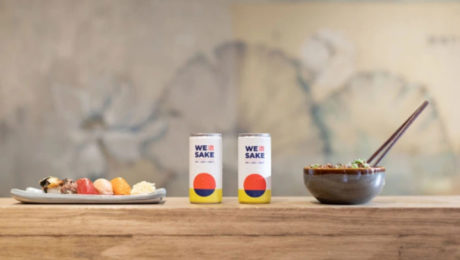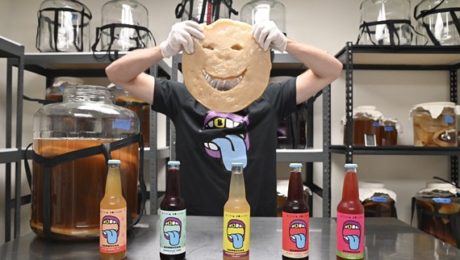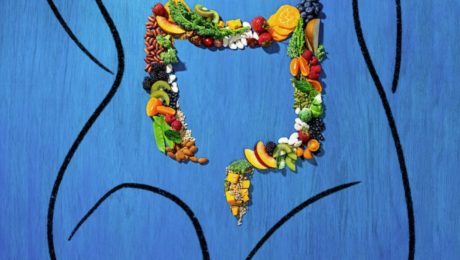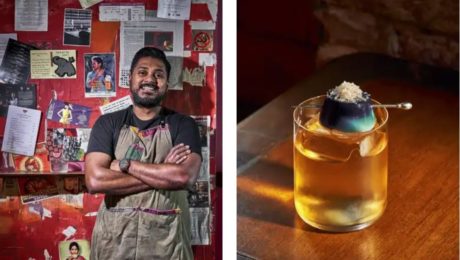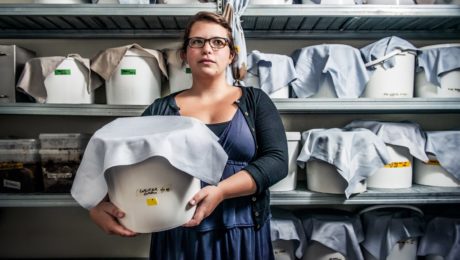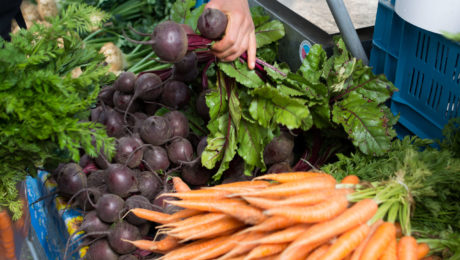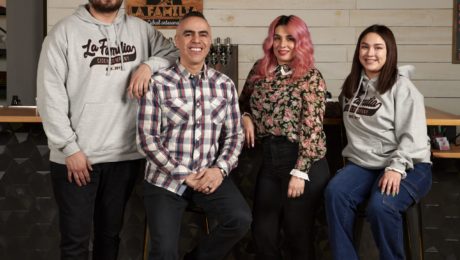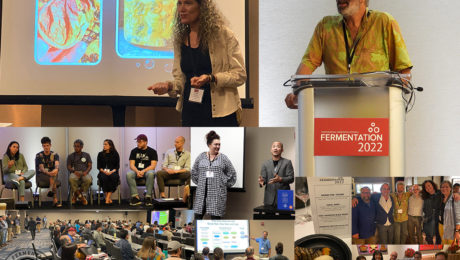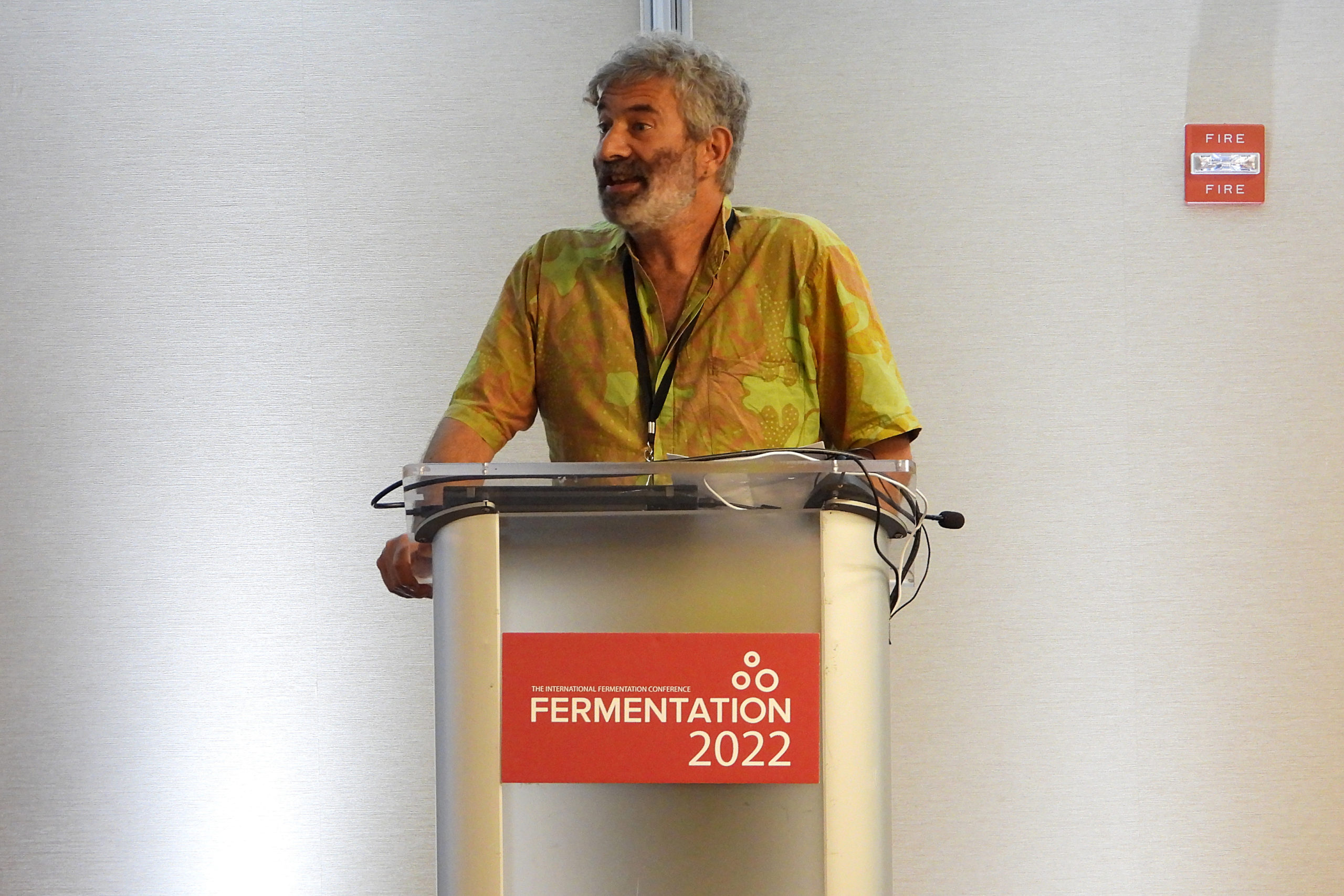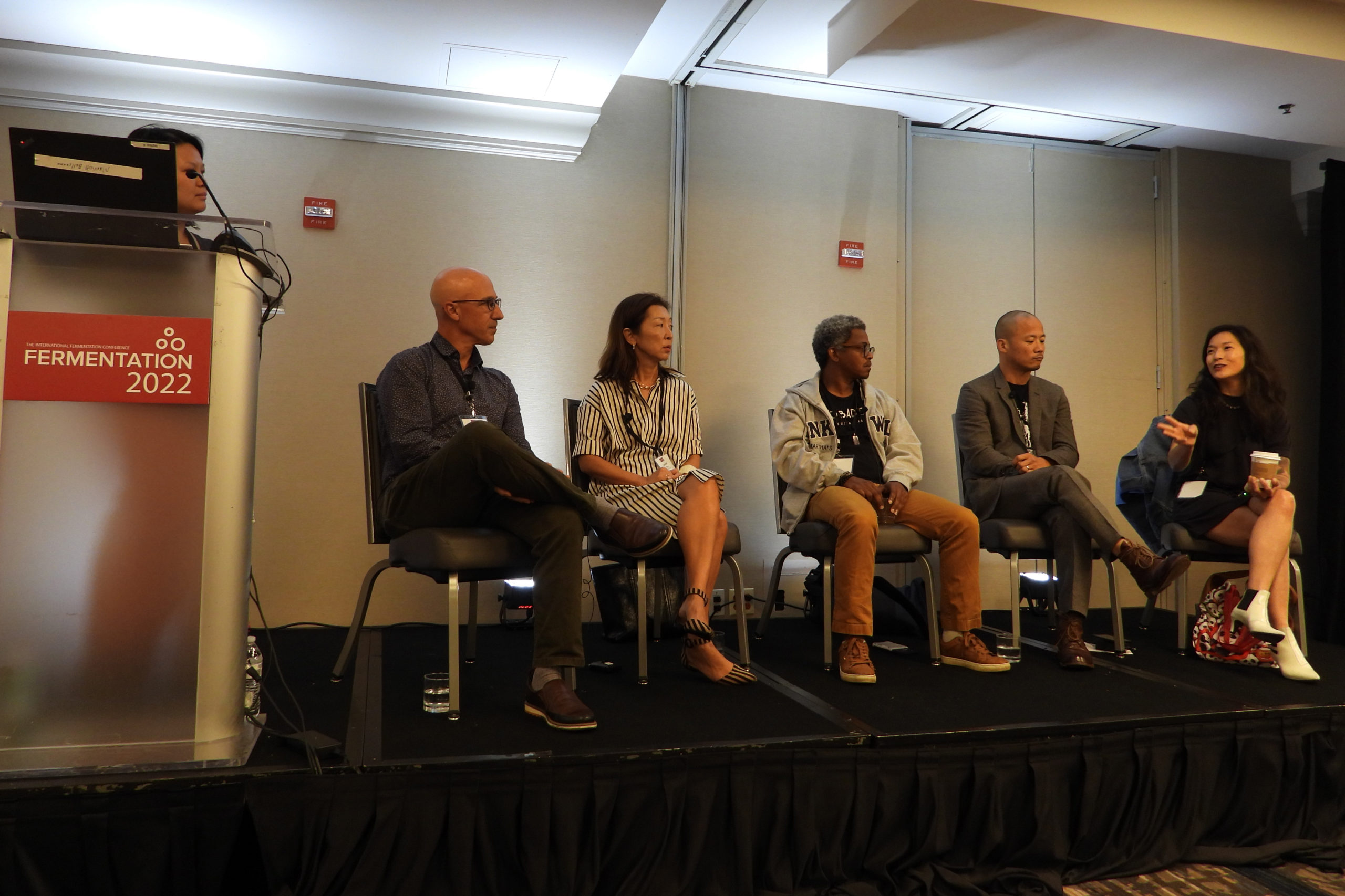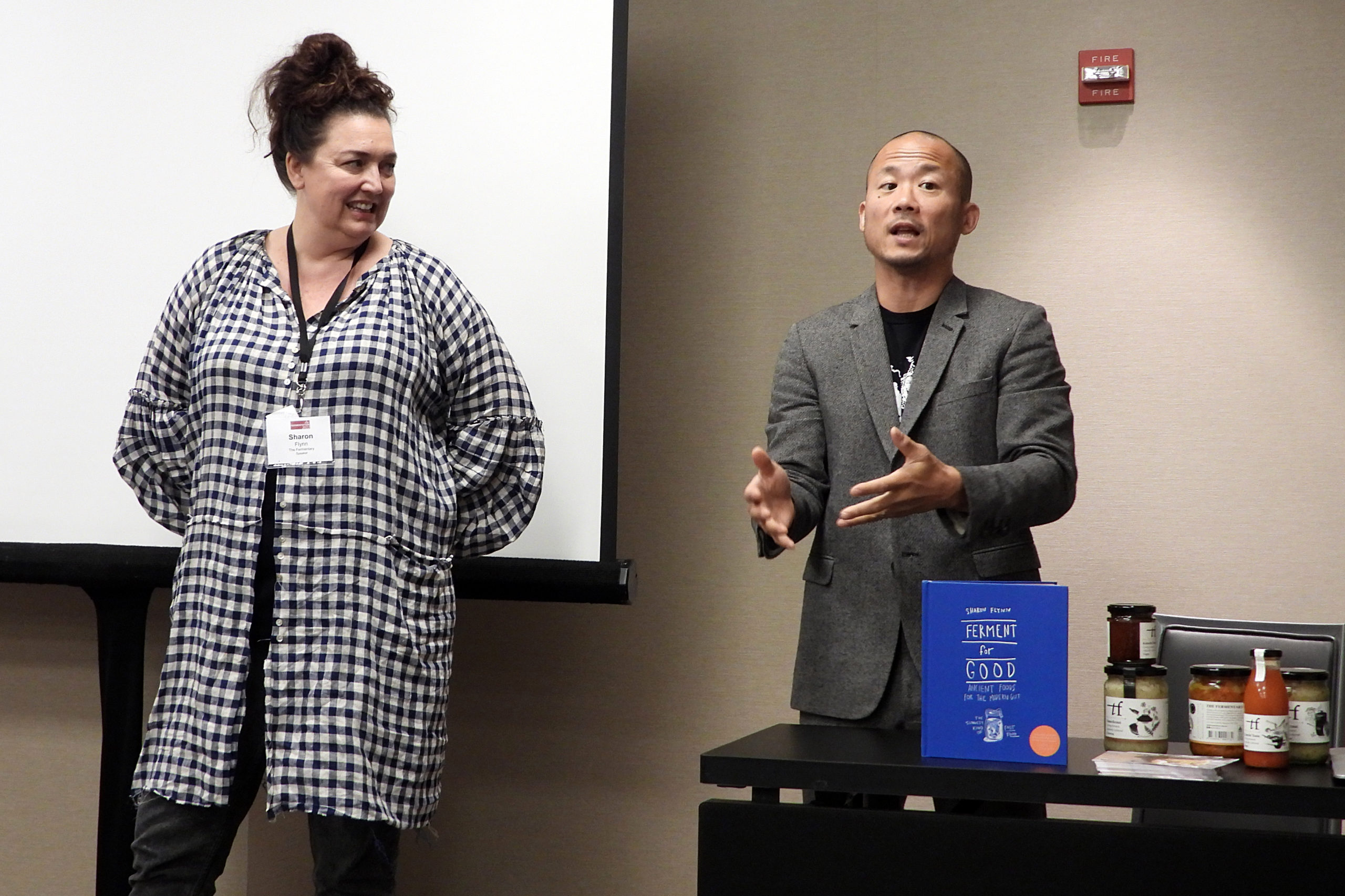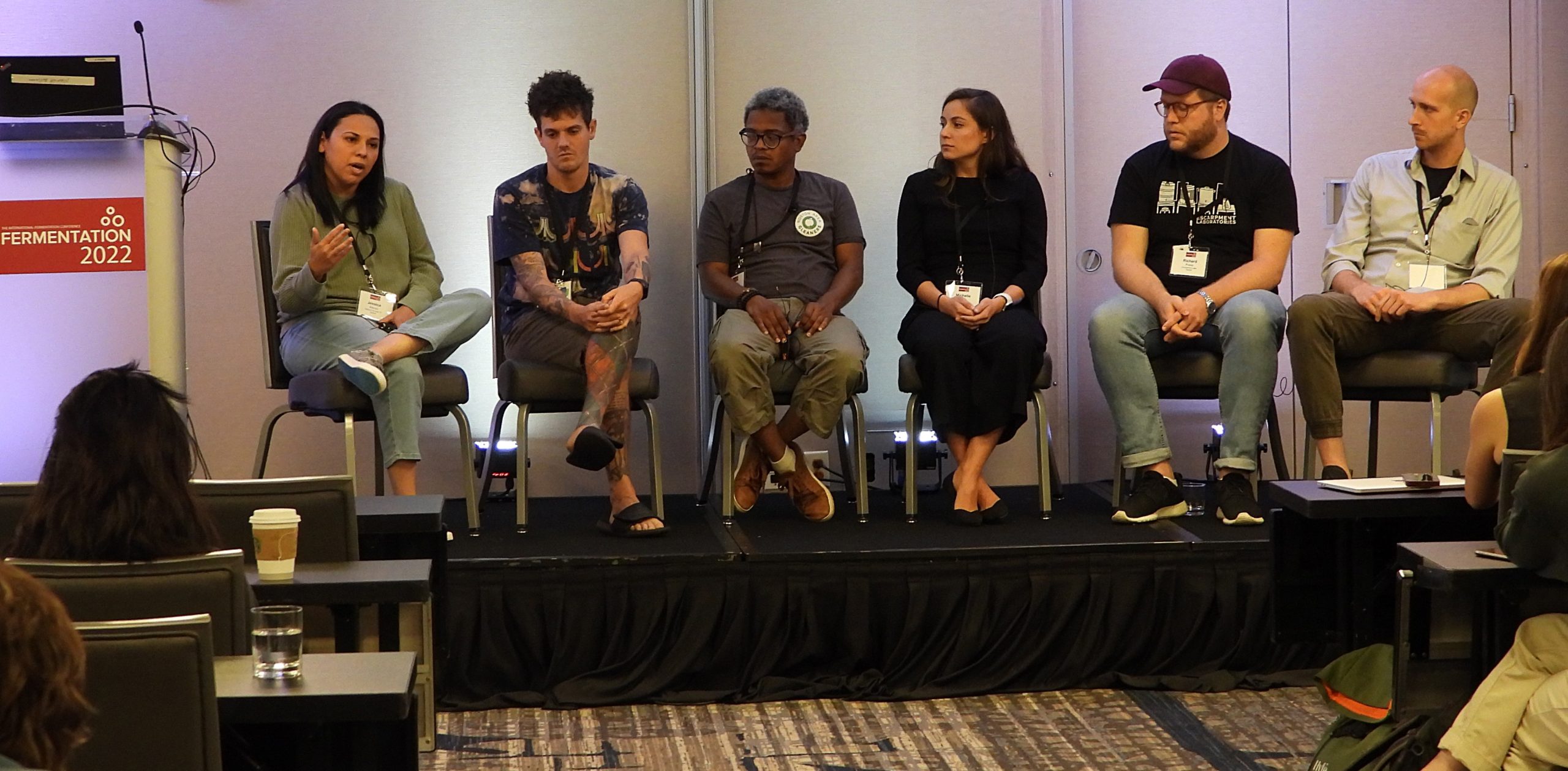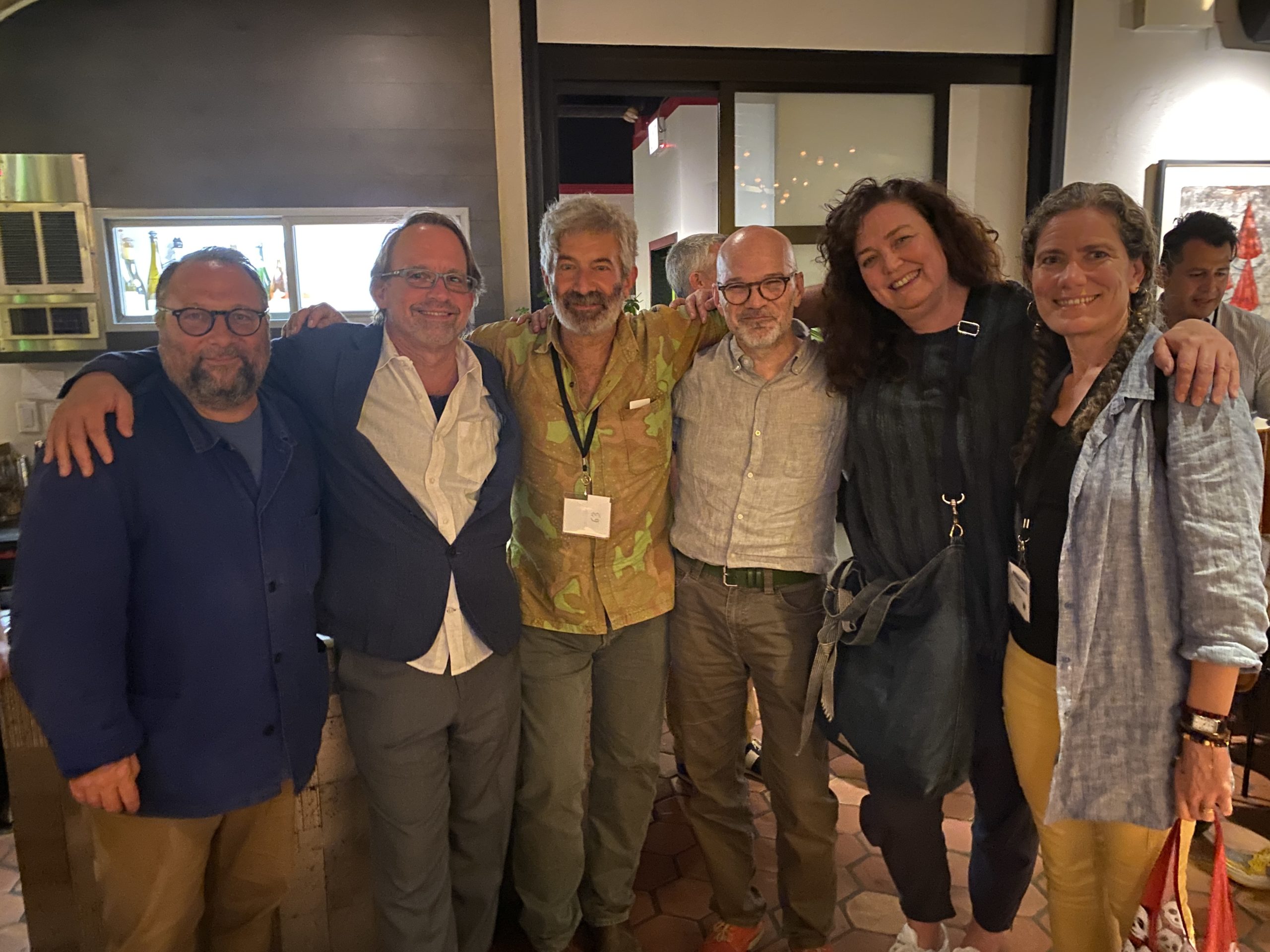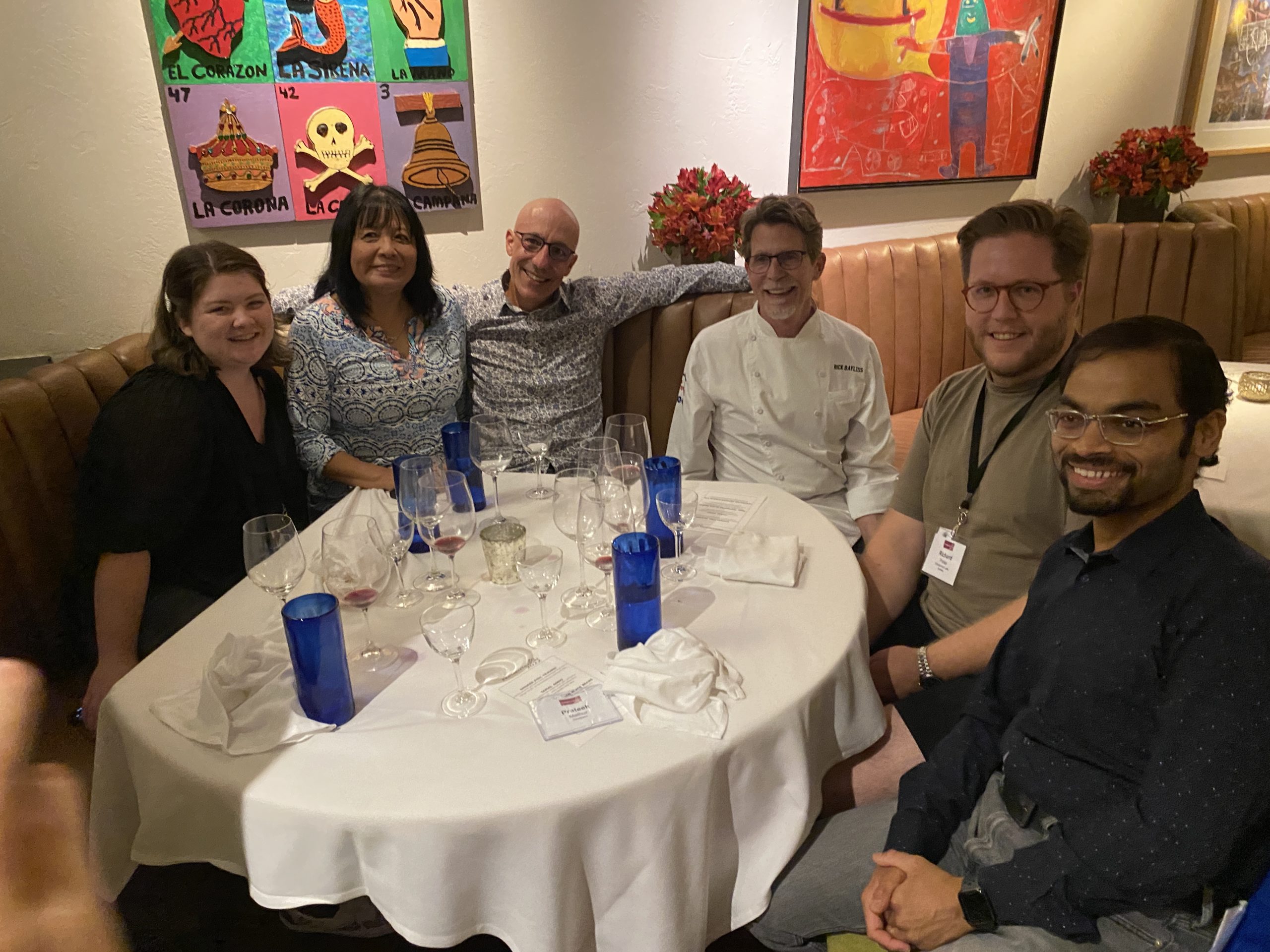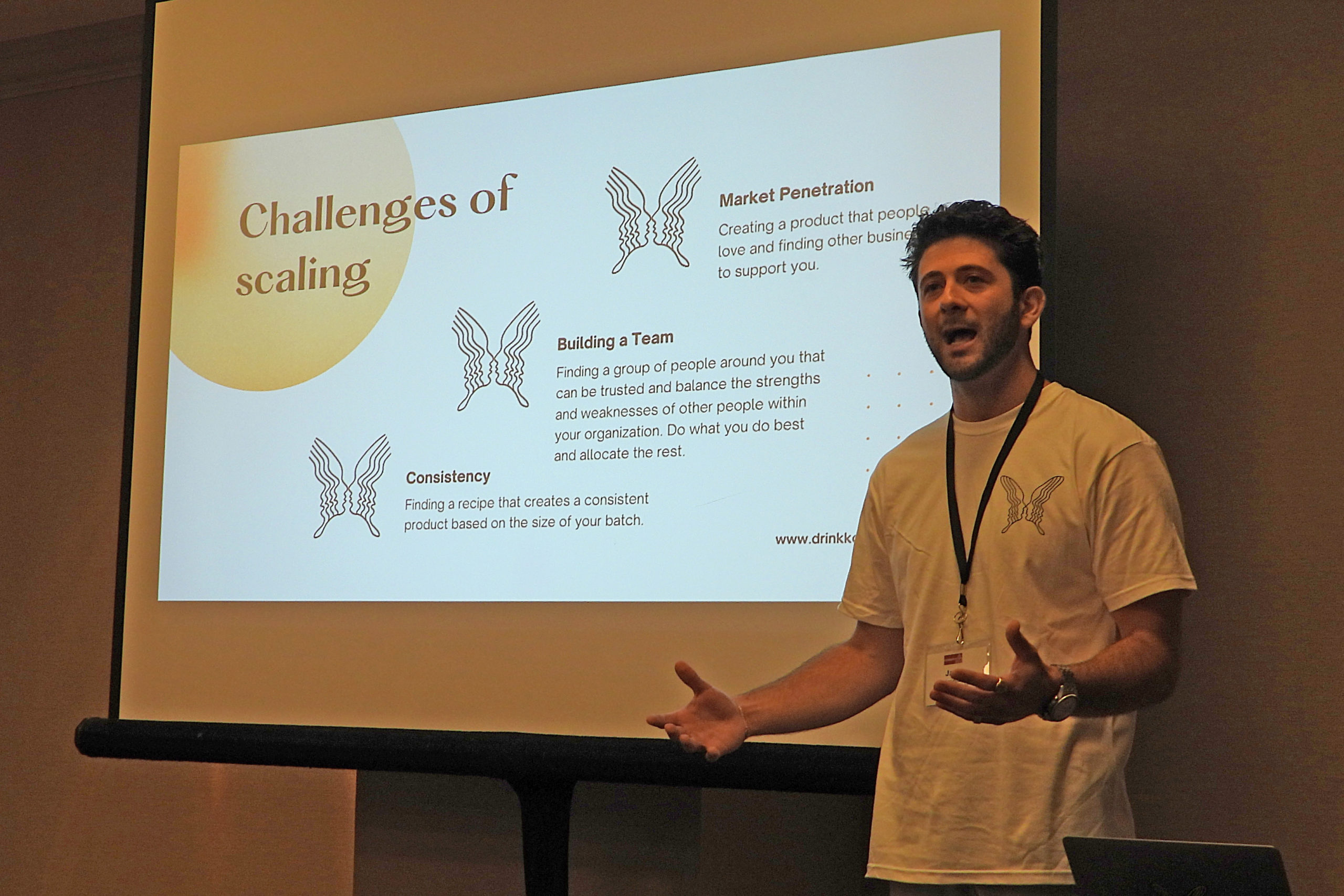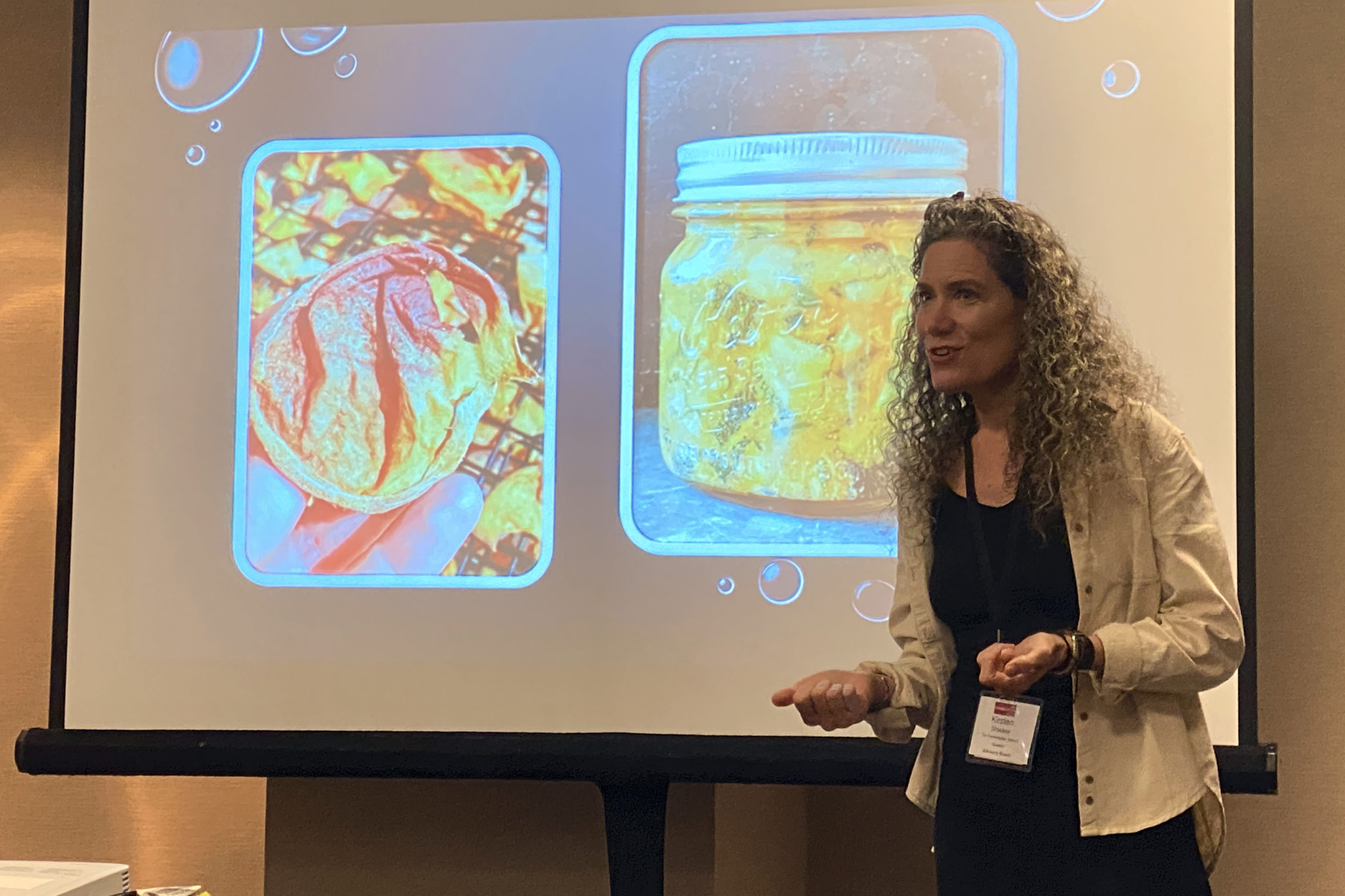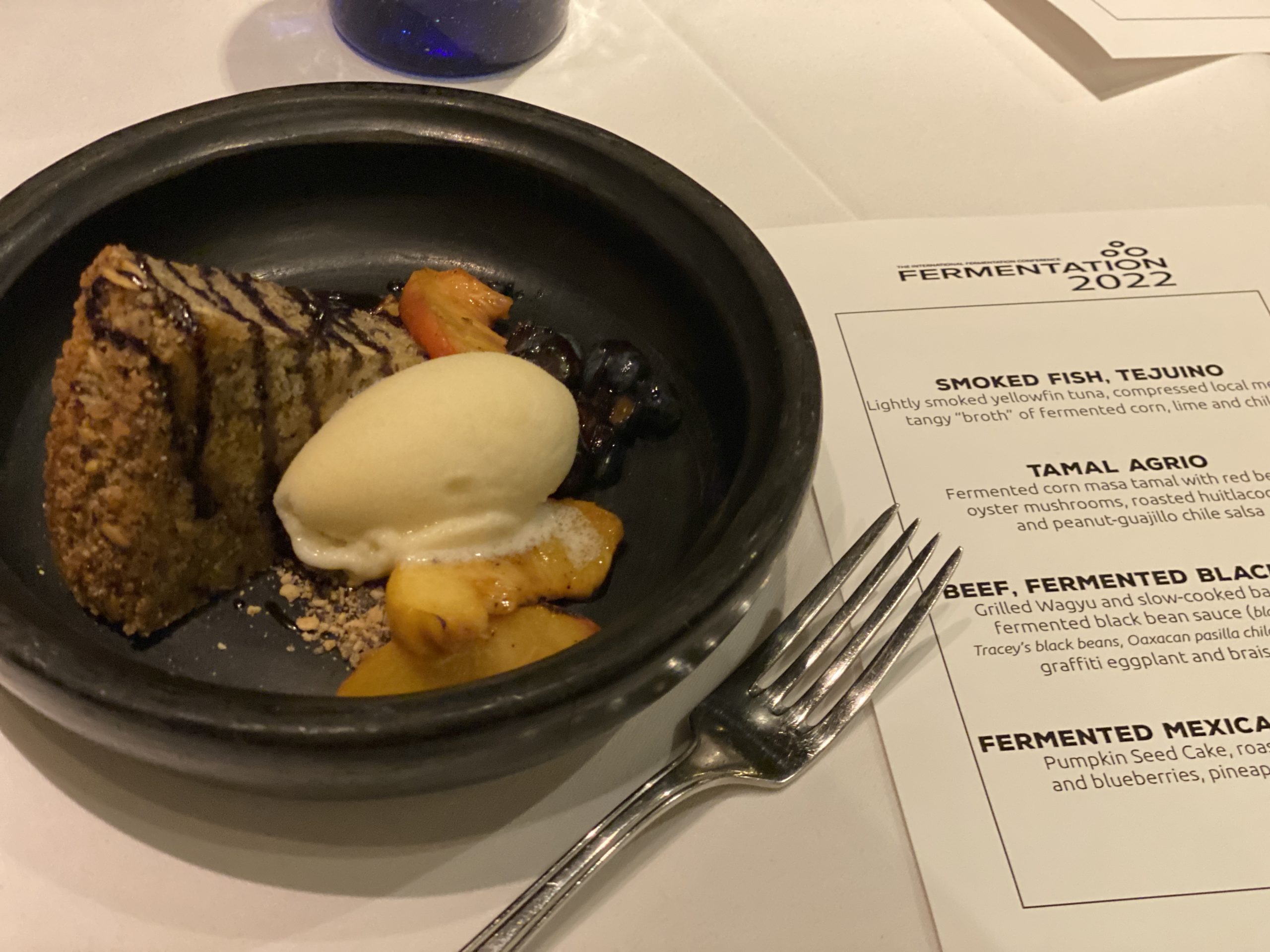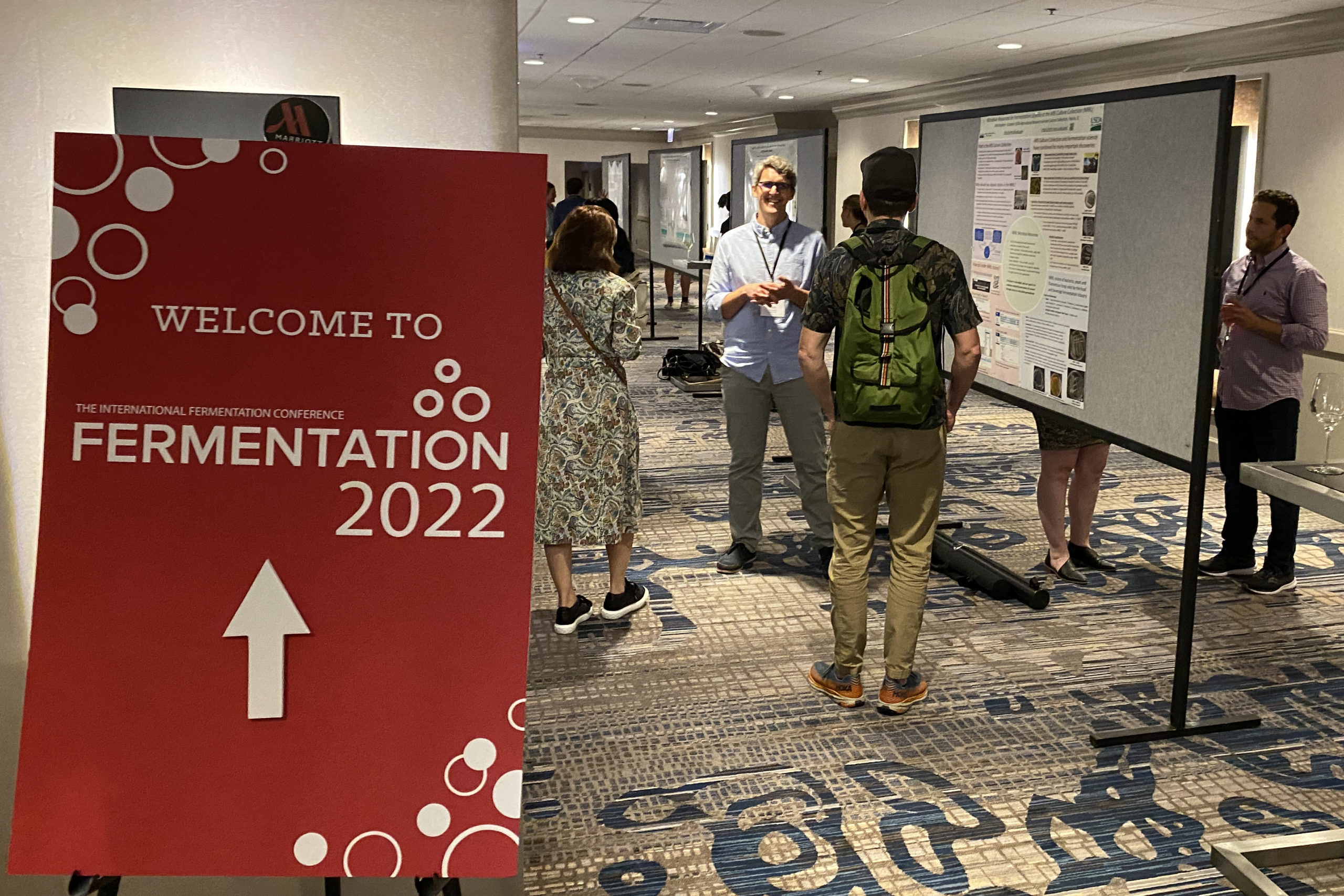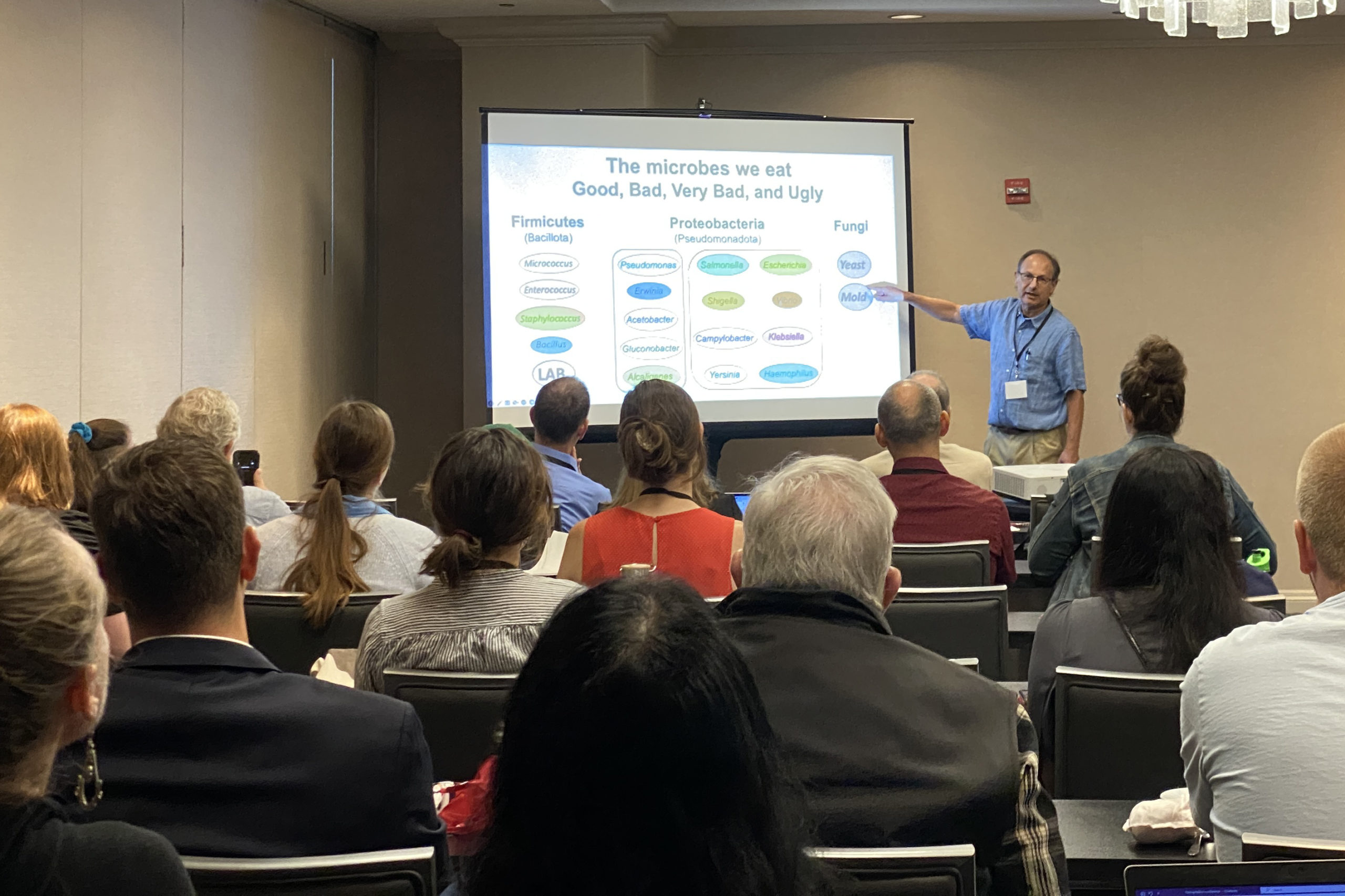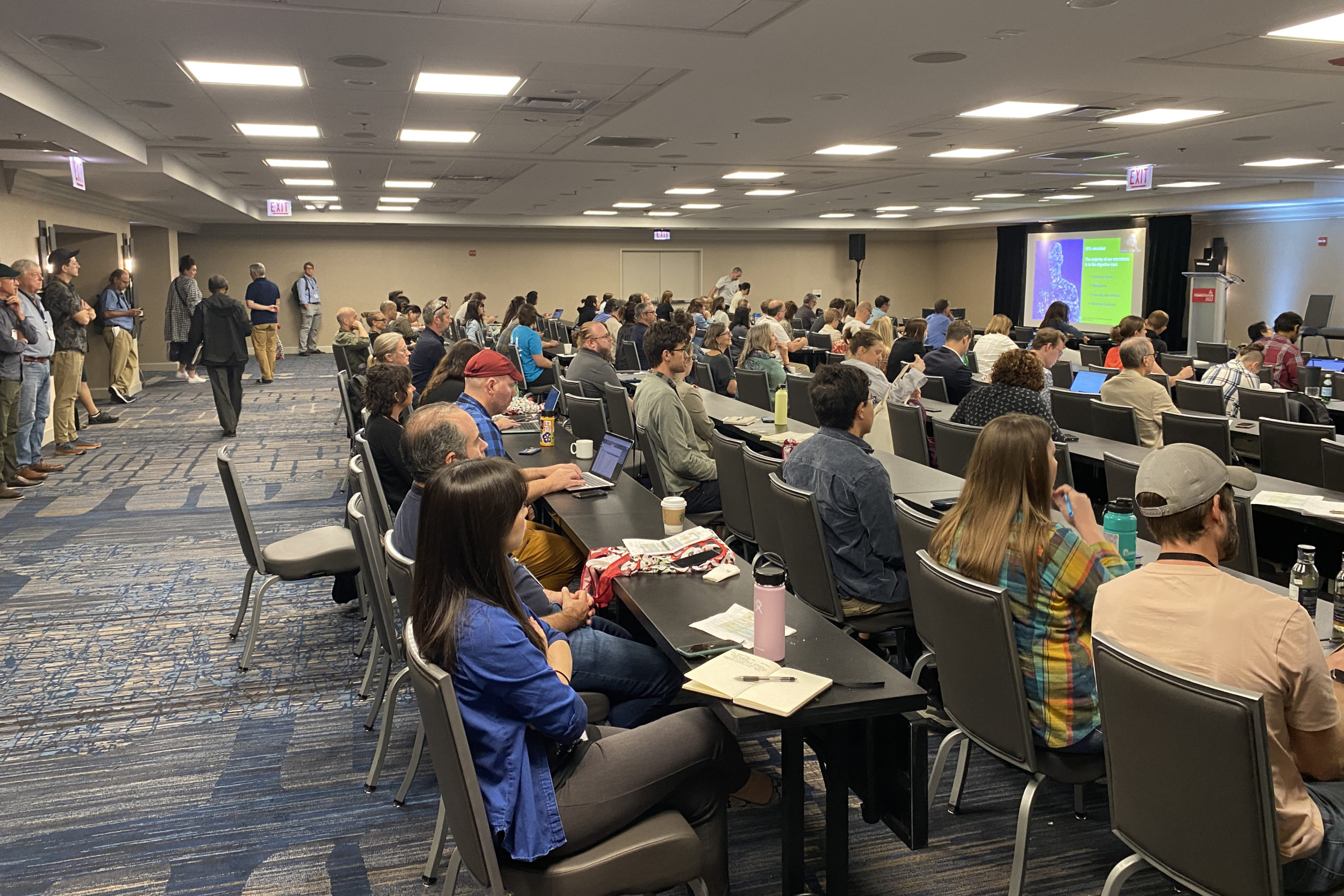Is the Future of Sake Canned?
Despite dedicated U.S. sake programs and educated American sommeliers, sake has been a harder sell in U.S. Federal regulations have never been able to properly define the drink. It’s taxed as a beer, but regulated as a wine. Education is a big issue. Many Americans think sake is a wine, causing them to drink too much of it and feel sick. Sake is brewed from fermented rice, making it similar to a beer.
“There’s a learning curve, but there’s also a bit of a cultural barrier. Sake can come across the way wine can — this very sophisticated product that’s expensive and that’s a bit esoteric, like you can’t really appreciate it unless you know all the nomenclature,” says Weston Konishi, president of the Sake Brewers Association of North America. “And then there’s the fact that Japanese sake tends to be labeled in Japanese, which most Americans can’t read. That’s been something of a barrier.”
Now more sake brewers are putting their sake in cans, making easy-to-purchase, grab-and-go options. It’s cheaper, too, at $5 a can versus $30 for a bottle.
“There’s something less intimidating about a can versus a bottle — that’s one advantage to canning sake. It’s not so erudite and out of reach,” says Konishi.
Inside Hook highlights six brands selling sake in cans.
Read more (Inside Hook)
- Published in Business
Brewing Kombucha for the Haters
In a crowded kombucha marked, Bitchin’ Boucha founder Jason Smith has a unique philosophy to selling the fermented tea. He’s not going after kombucha die-hards, he’s making it for people who don’t like kombucha.
The Richmond, Virginia brand launched eight years ago when Smith tasted kombucha while on a fast from alcohol and processed sugar. He liked it, but thought he could make it taste better.
“Other kombuchas can be too vinegary because most of the ones in stores are bottled and unpalatable,” explains Smith. “Shipping and refrigerating it for too long can kill the flavor because the kombucha is a living thing. Some companies even pasteurize it so it can’t ferment even more, and it kills all the live organisms which defeats the purpose. I make kombucha for people who don’t like kombucha. I want to show people that it can taste good.”
Bitchin’ Boucha debuts a new seasonal flavor every few months. And every batch of Bitchin’ Boucha must pass the taste test with his own kids. Smith says the process to create a new flavor, secure health department approval and bottle it takes two months. Currently, Bitchin’ Boucha produces 15-20 kegs of kombucha a week. Their first official employee besides Smith will start this month, with Smith aiming to sell the kombucha in a grocery store.
Read more (Style Weekly)
- Published in Food & Flavor
Upcycling & Zero Waste
Fermentation is a powerful culinary tool for upcycling.
During the Upcycling and Zero Waste session at FERMENTATION 2022, six fermentationists with diverse backgrounds in the industry shared how they’re using fermentation to reduce food waste.
“As a chef, we are constantly chasing these depths of flavors and things that you can’t get in regular cooking applications or techniques. Fermentation opened up a whole new world of flavor,” says Jessica Alonzo, a fermentation specialist and owner of small batch ferments company Native Ferments in Texas. “We were looking to enhance diner’s experience and fermentation did that.”
The panelists from all over the world included: Alonzo, Jeremy Kean (chef/owner of Brassica Kitchen), Mac Krol (CEO/founder of Mac Ferments), Richard Preiss (cofounder and brewing scientist at Escarpment Labs), Michelle Ruiz (CEO/co-founder of Hyfé Foods) and Ismail Samad (founder of Loiter and Wake Robin Foods).
Aiding farmers
Alonzo consults with area restaurants to build unique larders. She helped create the fermentation and whole food utilization program at Petra and the Beast as the former sous chef. Fermenting the restaurant byproducts helped the restaurant eliminate food scraps, cut down on food cost and partner with farmers.
Up to 40% of food grown in America is thrown away, according to the U.S. Department of Agriculture.
“I got into zero waste and upcycling through relationships with farmers, seeing how much was wasted at the farm level,” says Samad, who also co-founded and was executive chef at The Gleanery in Vermont. “The Gleanery existed for the last 12 years to provide a very clear safety net for farmers not selling their stuff at the farmers market.
Samad admits he didn’t know much about fermentation when he first started, “We just knew we didn’t want to keep wasting food.” By fermenting the kitchen scraps, “we’re making sacrifices that big food won’t do.”
Exploring Science
At a scientific level, Preiss at Escarpment is looking at upcycling “through a microbiologist lens.” Preiss said he began upcycling when he realized the current food system is unsustainable in a linear economy.
“There’s a lot of opportunity for creating circular food economies to not only reduce waste but help every single stakeholder involved in this process make more money, pay people more, create jobs, be more profitable and ultimately stay open as part of the sustainability discussion,” he says.
Restaurants are often leading upcycling and fermentation conversations – “many people know about fermentation because of restaurants.” But Preiss says the craft beer industry is becoming a leader in the upcycling movement because, today, they’re in many neighborhoods. “They have a really cool platform to communicate new ideas around food innovation.”
Escarpment is exploring interesting ways to use spent grains from beer. Currently, they’ve created a way to make seasonings. Brewers use those seasonings in their menu dishes, a novelty that gets customers excited about pairing a beer with a dish seasoned with that craft brew’s spent grain.
“There’s a lot of opportunity in that grain, there’s still a lot of nutritional quality,” Preiss says. “Through fermentation, we unlock new possibilities.”
Hyfé Foods is also utilizing waste. They’re taking the discarded sugar water (typically used in beverage production) and, through fermentation, repurposing it in mycelium flour. Mycelium is a type of mushroom. Hyfé’s proprietary biotechnology makes a protein-rich, low carb mycelium flour in a carbon-neutral, affordable process.
“Often when a manufacturer makes a product, the lifecycle being considered ends at the door. We’re often not measuring the greenhouse gas emission impact, the wasted sugar water – that goes down the drain,” says Ruiz. Food manufacturers pay a hefty fee to get rid of waste water. “We’re really excited about the position that upcycling puts us in, not only from a cost standpoint but also we’re creating a really nutritious, low cost food.”
Upcycling Barriers
Upcycling is not without its challenges.
Kroll at Mac Ferments specializes in koji. He recently created shoyu made with used coffee grounds, koji, water and salt – an excellent choice, he says, for a restaurant that likely throws out pounds of coffee grounds at the end of the night.
“It is obviously nice to create added volume from leftovers, it tightens the whole supply chain,” Kroll says. “But also there are risks of potentially overproducing just to create extra waste. You have to be careful what you’re doing because you’re dealing with enzymes – and we don’t see microbes.”
Fermentation, he says, should be utilized for quality, not quantity.
“If every dish has something fermented, a regular customer might come home starving,” Kroll adds.
Preiss sees collaboration as a major challenge because creating a circular, upcycled system involves multiple stakeholders sharing their waste products.
“Upcycling can’t be done in a silo, you need collaboration, and getting people that have the different pieces of the puzzle together to make it happen is the biggest challenge,” he says.
Samad, meanwhile, says scaling is a hurdle. “There are opportunities for investments around upcycling, but there’s a ceiling where this culture or ethos can be sustained.”
Educating customers, too, can be tricky. The public consuming the product or dish needs to understand what is upcycled. Servers, as the mouthpiece to diners, must taste and know a dish to communicate its elements. Chefs must detail to servers where ingredients were sourced, how long the food was aged and what was cross utilized, Alonzo says.
Panelists said the public is excited about the new taste experiences with upcycled food – but they’re also more curious about the science behind it.
“Folks come into Brassica for that fermentation program and are so interested and hungry for that knowledge from the science community,” Kean says. “And then theres folks that just want to eat and say ‘What the fuck was that?’ I think it’s a mixture between the two.”
“The education around all this stuff is growing,” he adds. “I see the culinary world and science world getting closer and closer together and I think that’s the right direction.”
- Published in Food & Flavor, Science
Nourishing Microbiota With Fermented Foods
The gut microbiome and how fermented foods can nourish it topped the Washington Post headlines in September. The article shared highlights from the growing number of studies that suggest “these vast communities of microbes are the gateway to your health and well-being — and that one of the simplest and most powerful ways to shape and nurture them is through your diet.” Food (and environment and lifestyle behaviors) have a much larger impact on the gut microbiome than genetics.
The article by health reporter Anahad O’Conner says science proves diverse diets make diverse gut microbiomes. Lower rates of microbiome diversity is linked to chronic diseases like obesity, diabetes and rheumatoid arthritis.
One way to increase that diversity is by eating fermented foods – the article points out yogurt, kimchi, sauerkraut, kombucha and kefir as excellent examples.
“The microbes in fermented foods, known as probiotics, produce vitamins, hormones and other nutrients. When you consume them, they can increase your gut microbiome diversity and boost your immune health, said Maria Marco, a professor of food science and technology who studies microbes and gut health at the University of California, Davis.”
A study by researchers at Stanford – and published last year in the journal Cell – found people who eat fermented food regularly increase their gut microbial diversity and lower their levels of inflammation.
“While it’s clear that eating lots of fiber is good for your microbiome, research shows that eating the wrong foods can tip the balance in your gut in favor of disease-promoting microbes,” writes O’Connor. The “bad” microbes, according to research, are commonly found in highly processed foods “that are low in fiber and high in additives such as sugar, salt and artificial ingredients. This includes soft drinks, white bread and white pasta, processed meats and packaged snacks like cookies, candy bars and potato chips.
Tim Spector, professor of epidemiology at King’s College London and the founder of the British Gut Project, tells the Washington Post that eating a wide variety of plants, fiber and nutrient-dense foods is also beneficial for the gut. Spector encourages people to eat 30 different plant foods a week, which can include produce, nuts, herbs and spices.
Read more (The Washington Post)
Local Flavors Drive Singapore’s Growing Craft Cocktail Scene
Fifteen years ago, Singapore’s craft cocktail scene was nonexistent. The few existing cocktail bars served beer and whisky. Today, Singapore is filled with world-class venues serving unique drinks that highlight the regional ingredients and culture of the southeast Asian metropolis.
The National Geographic explores “the city-state’s roster of award-winning drinking dens includes stellar hotel bars, sleek speakeasies and reimagined Chinatown shophouses.”
Creative drinks include those served by Nutmeg & Clove. Its Singapore-inspired cocktail list features a changing bar menu, like the current cocktail Can Bubble Gum?, a mezcal-based drink topped with candy-flavored foam. The drink is a tongue-in-cheek jab at Singapore’s ban on chewing gum. Another unique cocktail, the Oyster Omelette, is served at bar Native. The yellow, umami-packed drink is made with a base of distillate of oysters harvested off a nearby island, Pulau Ubin. The drink is served, appropriately, in a cup made of oyster shells.
“When we opened eight years ago, there were a few cocktail bars in Singapore, but they were mainly quite international,” says Colin Chia, owner of Nutmeg & Clove. “I wanted to set up something that we could proudly call a Singaporean cocktail bar.”
While sourcing can be a challenge in Singapore – an island off southern Malaysia – bars get creative. Menus are seasonal, ingredients are local and often cured, pickled or fermented to extend shelf life. Pictured, Yugnes Susela, the owner and bartender of The Elephant Room, that focuses the establishment on the colorful markets of Singapore enclave Little India. The drink is the Peranakan cocktail at Native Bar.
Read more (National Geographic)
- Published in Food & Flavor
The Flavor Whisperer on Fermentation
Flavor is much more complex than just taste. Flavor can be collected, extracted, infused, created and transformed. And, in a billion-dollar flavor industry devoted to putting flavors into processed foods, fermentation is the oldest and most natural flavor creator, developing new flavors at a molecular level.
“Fermentation as a flavor creation process in collaboration with microbes, there’s almost no limit to how you can apply it and use the ingredients around you and have a more flavorful palette to work from,” says Arielle Johnson, PhD, a flavor scientist, gastronomy and innovation researcher and co-founder of the Noma Fermentation Lab.
A food chemist dubbed the flavor whisperer, she works with restaurants on innovating dishes and cocktails. She researches how flavor is perceived and is writing a book on her studies, Flavorama. Her work comes together in “all things science and cuisine have to say to each other.”
This week Johnson shared her insights into flavor and fermentation as a guest lecturer at Harvard University’s Science & Cooking series.
Taste & Smell Receptors
Flavor can be quite complex – Johnson calls it a black box.
There are five primary tastes: sweet, sour, salty, umami and bitter. Each taste evolved to ensure humans get basic nutrition. We use sweet foods for the energy in sugar, sour ones for vitamin C from fruit and fermented foods. Salty foods provide the essential mineral sodium. We seek umami foods for the taste of glutamine, an amino acid in proteins and fermented foods.
But bitter, Johnson points out, doesn’t sense one thing. It senses multiple molecules that are potential toxins for us. This is why bitter is called an acquired taste.
Smell is Johnson’s favorite part of the flavor profile. In order to taste, we must smell, too. Molecules land in the olfactory receptors in the nasal cavity and help activate taste. This is why food is tasteless if you plug your nose while eating. But the back of the throat is also connected to the nasal cavity, so the throat becomes “the secret backdoor” for sensing flavor.
While there are five major tastes and four receptor areas on the tongue, there are 40 billion smellable molecules and 400 receptors for smell.
Supertasters vs. Nontasters
Taste and smell, she detailed, help us understand how fermentation works.
The population can be divided into supertasters or nontasters. During her presentation, Johnson had the audience put a strip of filter paper on their tongue. The paper included a harmless bitter molecule phenylthiourea (PTC), but only roughly half the class could taste it. This group are supertasters – the group who could not taste the PTC are nontasters.
She explained everyone has different density of their taste buds. Supertasters have more taste buds, so more taste receptors signals are sent to their brains. This has culinary implications. Because their sense of taste is more sensitive, flavors are intense and supertasters have a less adventurous palette. Meanwhile nontasters have dulled senses, so it takes a lot of flavor to activate taste.
“The good news for supertasters is that fermentation is usually salty and sour and often umami – all of which counteract bitterness,” Johnson says. “Fermentation is a way to create new flavors but also transform ingredients.”
Fermentation as Flavor
Though “microbes are opportunistic” and pop up in foods whether planned or not, fermentation can’t be forced, Johnson says. When making a sauerkraut, for example, microbes don’t need to be added. Fermentation works with what’s on the surface of the cabbage and on the producer’s hands.
Salt is key in fermentation as a flavor additive, a preservation element and a safety measure. Salt filters out bad molds and avoids letting a ferment spoil. Other factors “dial in the flavors in this molecular flavor creation process,” she says, like the correct ingredients, temperature control and humidity.
“We’re really excited about microbes and fermentation,” Johnson says. “In this process of this exponential growth that microbes do, they’re eating things, they’re getting energy, but they’re also running their regulator metabolism. So there’s all these waste products that are not very significant to the microbes, but that can create a lot of interesting flavor complexity.”
- Published in Food & Flavor, Science
Fermentation for Global Health
Though scientists and environmentalists have warned about the dangers of increased meat consumption, Americans’ appetite for it is not slowing down. The last three years marked the largest amount of meat produced on record.
“People know about the harms of industrial agriculture, but people eat more and more and more meat,” says Bruce Friedrich, CEO of the Good Food Institute (GFI). “It’s an inextricable rise despite more and more attention to the issues. The vast majority of people are just not going to apply ethical considerations to their food choices.”
Fermentation, Friedrich declares, can be part of the solution. “Fermentation can be so powerful for global health, climate and biodiversity,” he says.
Friedrich spoke at FERMENTATION 2022 on alternative protein innovation. GFI, a nonprofit, aims to accelerate the innovation of fermented, plant- and cell-based alternative meat. But the young, rapidly-growing alt protein industry faces major obstacles in scaling, regulation, pricing and consumer acceptance. Friedrich told a room of professional fermenters at the conference to consider shifting to a career in alternative proteins.
“Anyone involved in fermentation, you have the expertise in knowledge. It’s cross-applying the skills and interest in your professional life into this new field,” he says. “One of the significant barriers for all the companies doing this is talent, which is to say – you.”
Global Agriculture Crisis
Friedrich does not mince his words: we’re on the precipice of a major environmental and health crisis if we don’t reduce meat consumption.
Mass producing meat is “extraordinarily inefficient.” Huge amounts of crops are grown to feed livestock so humans can then eat the animals.. “We have been using an antiquated method to produce meat for 12,000 years,” Friedrich adds.
Internationally, 4 billion hectares of land are used for agriculture – 3 billion are for grazing livestock or to grow their food. It takes 9 calories of feed to produce 1 calorie of chicken; 40 calories to produce 1 calorie of beef.
“This is an incredibly inefficient way to try and feed the world,” Friedrich says.
And it’s getting worse. By 2050, global meat consumption is projected to increase – conservative estimates say 50%, while others go as high as 260%.
Animal agriculture also is thought to be a major contributor to global climate change and a major factor in deforestation. Livestock are pumped with antibiotics, creating resistance in humans that consume that meat.
Future of “Meat”
The answer isn’t necessarily a world of vegetarians – it’s to change traditional meat.
Friedrich compares the situation to renewable energy and electric vehicles. For decades, government leaders have preached reducing fossil fuel consumption. But, as populations have risen, so has energy consumption.
“You are not going to convince people to consume less energy,” he says. “What you need to do is replace fossil fuels with renewable energy.”
Similarly with meat, there cannot be a meatless world. “This is innovation focused, it is not about behavior change,” he says.
“GFI when we started, we were talking about disrupting animal agriculture. We very quickly realized our hope is to transform industrial animal agriculture,” he says. “Things will happen a lot more quickly if we have the major corporations on board.”
GFI is “enthusiastically working with the biggest companies in the world:” JBS, Tyson, Smithfield, Cargill and BRF, the five largest global meat producers.
The aim is not to regulate big agriculture or stop subsidies. GFI hopes to open access into the science behind alternative proteins, incentivize the private sector to continue R&D and encourage government funding.
“The same sort of cash breaks that allowed Tesla to be successful should apply to Nature’s Fynd and Impossible Foods and others if they want that money,” Friedrich says, listing two major companies in the alternative protein industry. “Our global battle cry is that governments should be funding alternative proteins.”
Food Trifecta
By not gatekeeping alt protein technology, Friedrich says GFI is helping perfect the process of giving consumers the exact same meat experience, but using plant- or cell-based meats. People want the food trifecta, Friedrich says: Is it delicious? Does it fill me up? Is it reasonably priced?
Fermentation is a booming sector in the alternative protein industry. It is split into three categories: traditional fermentation using lactic acid bacteria, yeasts or fungi; biomass fermentation which involves naturally occurring, protein-dense, fast-growing microorganisms; and precision fermentation, which uses microbial hosts as “cell factories” to produce specific ingredients.
Data from GFI found, of the alt protein startups utilizing fermentation, 45% use precision fermentation, 41% use biomass fermentation and the remaining 14% use traditional fermentation.
GFI recently hired two fermentation scientists, and their studies are already suggesting biomass and traditional fermentation will have better environmental numbers than plant-based meats. Fermentation is also a more powerful process than plant-based meat applications because fermentation can replicate precise fermentation proteins. And although traditional fermentation is the smallest part of the fermented alternative protein category, GFI sees it growing because of its ability to produce appealing flavors..
“Traditional fermentation can be an absolutely essential element to get meat to taste the same or better or cost the same or less,” he says.
“The plant based and fermentation products, they’re just getting started. The idea of competing with industrial animal meat has been around for (snaps his fingers) that long. The products are just going to improve and improve and improve.”
Does Organic vs. Conventional Matter for Fermented Foods?
Organic food is considered by some to be healthier and more nutritious than its conventional counterpart. But what about when that food is fermented? Does organic vs. conventional matter?
A new study reveals some surprising results: when it comes to fermented foods, “the quality of organic food is not always better than conventional food.”
Organic vs. conventional agricultural production is a hotly debated topic – some reports indicate organic food is more nutritious, but other research suggests the nutritional differences are not significant. Meanwhile, fermented foods are scientifically-proven to include higher nutritional value. “During fermentation, the concentration of many bioactive compounds increases, and the bioavailability of iron, vitamin C, beta carotene, or betaine is also improved,” the study notes. Fermented products also “inhibit the development of pathogens in the digestive tract.”
Researchers at the Bydgoszcz University of Science and Technology in Poland questioned whether fermenting organic food would change its nutritional output versus using conventional food. Their results were published in the journal Molecules.
Analyzing fermented plants (pickles, sauerkraut, beet and carrot juices) and dairy (yogurt, kefir and buttermilk), researchers measured the vitamins, minerals and lactic acid bacteria in the items. They compared using organic ingredients in one group to products made from conventional ingredients.
“Research results do not clearly indicate which production system–conventional or organic–provides higher levels of bioactive substances in fermented food,” the study reads.
Results were mixed. Lactic acid bacteria – the good, healthy kind – were higher in organic sauerkraut, carrot juice, yogurt and kefir. Organic kraut and pickles produced more vitamin C than conventional versions. And calcium levels were higher in yogurt made with organic milk.
But, interestingly, lactic acid bacteria levels were higher in conventional pickles and beet juice. Conventional beet juice also had five times more beta-carotene (vitamin A).
Read more (Molecules)
Mexican Hard Cider
An Oregon cidery is taking an interesting approach to hard cider, ciders inspired by aguas frescas.
La Familia Cider Company founder José Gonzales is a first-generation Mexican-American. He runs La Familia Cider Company with his wife, Shani, and their kids Jay Jay and Jezzelle. José and Shani grew up drinking aguas frescas, but couldn’t find those drinks in Oregon.
“As my wife and I were enjoying Oregon craft beer and cider, she said, ‘Too bad there aren’t any of the flavors we grew up with,” José said. So they developed their own brand with flavors reflecting their heritage.
Their ciders are from freshly-picked, northwest-grown apples, but the flavors reflect the family’s Mexican heritage. Mainstay flavors include Manzana, Tamarindo and Hibiscus.
“With our ciders we wanted to do something a little bit different,” explained Jay Jay. “Change up the game a little bit.”
Today, the Salem, Ore.-based brand is in more than 50 stores in Oregon and Washington.
Read more (KGW8)
- Published in Business, Food & Flavor
Cultured in Chicago: Highlights of FERMENTATION 2022
Science met the culinary arts in Chicago, at the first in-person conference of The Fermentation Association (TFA), FERMENTATION 2022. Over 200 food and beverage professionals from 15 countries Participated in four days of programming.
“There’s no denying that fermentation is having a moment – and that’s a wonderful thing that more and more people are aware of fermentation and interested in fermentation – but it’s really important to keep saying fermentation is not a fad, fermentation is a fact,” said Sandor Katz, fermentation author and educator.
Katz was the opening keynote speaker at FERMENTATION 2022. The nearly 50 experts and thought leaders who presented included Dan Saladino (BBC journalist and author of Eating to Extinction), Kirsten Shockey (author, educator and co-founder of The Fermentation School), Bob Hutkins (food microbiology professor at University of Nebraska and founder of Synbiotic Health), Sharon Flynn (founder of The Fermentary in Melbourne, Australia), Bruce Friedrich (co-founder and executive director of The Good Food Institute), Maria Marco (food science professor at University of California, Davis) and Sean Brock (chef and owner of Nashville’s Audrey Restaurant).
The conference comes as sales of fermented foods and beverages continue to rise. Fermented products grew 7.1% in the last year, according to SPINS LLC, a data provider for natural, organic and specialty products that also presented at FERMENTATION 2022.
Though Katz taught his first fermentation workshop in 1998, he’s seen “a building interest in fermentation” in the last decade. Each year since 2011, “someone says the food trend of the year is fermentation.”
“Usually I end up being a cheerleader for fermentation, encouraging people who somehow think that fermentation is an alien process, that there’s something scary about it,” he said. “I mostly reassure people that they’ve been eating products of fermentation almost every day for their entire lives, that these are processes that their safety has been proven by their endurance over time. But you all don’t need to hear that. I am speaking to the converted here.”
Where Science Meets Industry
TFA aims to fill a niche in the world of fermentation. There are plenty of DIY fermentation festivals, food and beverage industry conferences and trade shows. But TFA connects science and industry.
Attendees at the event included an array of professionals involved in fermentation – producers, retailers, chefs, scientists, researchers, authors, suppliers, educators and regulators. The conference revolved around three tracks: food, flavor and culture; science and health; and business, legal and regulatory. The group of passionate fermenters in attendance uniformly expressed their excitement and delight to learn from experts in different disciplines.
“This unique conference had the most diverse attendees as it included chefs, scientists and more,” said Glory Bui, a graduate student researcher at the University of California, Davis. “It was nice to network with those who were and were not in academia to hear different perspectives in the fermentation industry.” [Bui won the student poster competition with her research on how fermented dairy products can affect gastrointestinal health.]
Producers made up over 40% of attendees and ran the gamut from small to large scale. Sash Sunday, founder and fermentationist behind OlyKraut in Olympia, Wash., said she’s been searching for such a fermentation conference since starting her brand in 2008.
“I really appreciate getting to spend time getting to know other fermenters, hearing about people’s creative processes and experiences in the field,” Sunday said. “I really loved all the tastings and spending time with people who really think about the flavors in fermented foods.”
Niccolo Fraschetti, owner of Alive Ferments, said networking was one of his favorite parts of the conference.
“There were people there that were superstars of fermentation to people making kimchi in the bathtub,” Fraschetti said. “It was such a cool merging of fermentation.”
Fraschetti officially launched Alive Ferments in March and said he never expected the brand to grow so fast, so quickly. Alive Ferments currently is sold in 25 stores in the San Diego area. At FERMENTATION 2022, he brainstormed ideas with attendees and speakers.
“Usually I feel like in these situations, everyone is tight-lipped and doesn’t want to share (business secrets),” he said. “But everyone was a really embracing community and willing to share their knowledge. There was no competition between the peers that were at the conference.”
Connecting with others in the industry was a highlight, too, for Suzette Smith, founder of Garden Goddess Ferments and Pick up the Beet in Arizona.
“I loved that like minds were able to come together sharing similar passions,” Smith said. (I also loved “learning what’s new in the promotion of fermented foods.”
Gregory Smith, an independent chef based in Pittsburgh, said he “drove back from Chicago with my mind racing about all the things I learned.” He said the various chefs who spoke at the conference – like Flynn, Brock, Ismail Samad of Wake Robin Foods, Jessica Alonzo of Native Ferments, Misti Norris of Petra and the Beast and Jeremy Kean of Brassica Kitchen – inspired him to dive into upcycling.
“I’m excited about the way they made me look at food waste in the kitchen space and how to help utilize waste and taking excess product and converting it into something tasty,” said Smith, who runs his independent culinary service Thyme, Love & Culture with friend Romeo Kihumbu.
Karen Wang Diggs, founder of the ChouAmi fermentation device, spoke at the event in a session on fermenting with medicinal plants. She said it was “an honor” to speak at FERMENTATION 2022.
“I got to hang out with a bunch of really cool, ‘cultured,’ fermenting people – and the presentations were fabulous,” she said.
Added Neal Vitale, executive director of The Fermentation Association: “It was a privilege to have a stellar lineup of speakers. It was great to get to get together at last and explore so many aspects of fermentation.”
Focus on Food
Other events at the conference included: a dinner with a fermentation-focused menu prepared by Rick Bayless, chef and restaurateur; a mezcal tasting with Lou Bank, founder of SACRED and the Agave Road Trip podcast; a craft beer and chocolate pairing with Long Beach Beer, Bread and Spirits Lab; a flavor analysis workshop with Sensory Spectrum Inc.; a screening of Ed Lee’s film Fermented (complete with buttered popcorn!); and multiple book signings.
Bayless, the James Beard Award winner who runs multiple Chicago restaurants, mingled with conference attendees during the dinner. He said he and his staff enjoyed the challenge of putting something fermented in every course.
“This is the first time we’ve done a meal that is so heavily fermented,” he said, “and we had a lot of fun doing it.”
Courses included a fermented corn masa tamal, beed with a fermented black bean sauce made with black bean miso and Oaxacan pasilla chile, smoked yellowfin tuna in a broth of tejuino (fermented corn drink), and chocolate from Tabasco, Mexico, with tepache (fermented pineapple) sorbet .
“I was at a conference with Sandor Katz years ago and I talked to him about making black bean miso, and now I get to serve it to him,” Bayless said.
The Fermentation Association was started in 2017 as the brainchild ofJohn Gray, then the owner of Bubbies Pickles. His goal was simple – to bring together everyone in the world of fermentation. Today, TFA circulates its biweekly newsletter to nearly 14,000, is followed by over 11,000 on Instagram and will next develop its presence on LinkedIn. The Association is run by a small staff and a 22-member Advisory Board, including six Science Advisors.
FERMENTATION 2022 was originally planned to be a May 2020 event, but obviously postponed due to Covid-19. A virtual FERMENTATION 2021 was held in November 2021. TFA will announce plans for 2023 and beyond in the coming months.
- Published in Business, Food & Flavor, Health, Science

